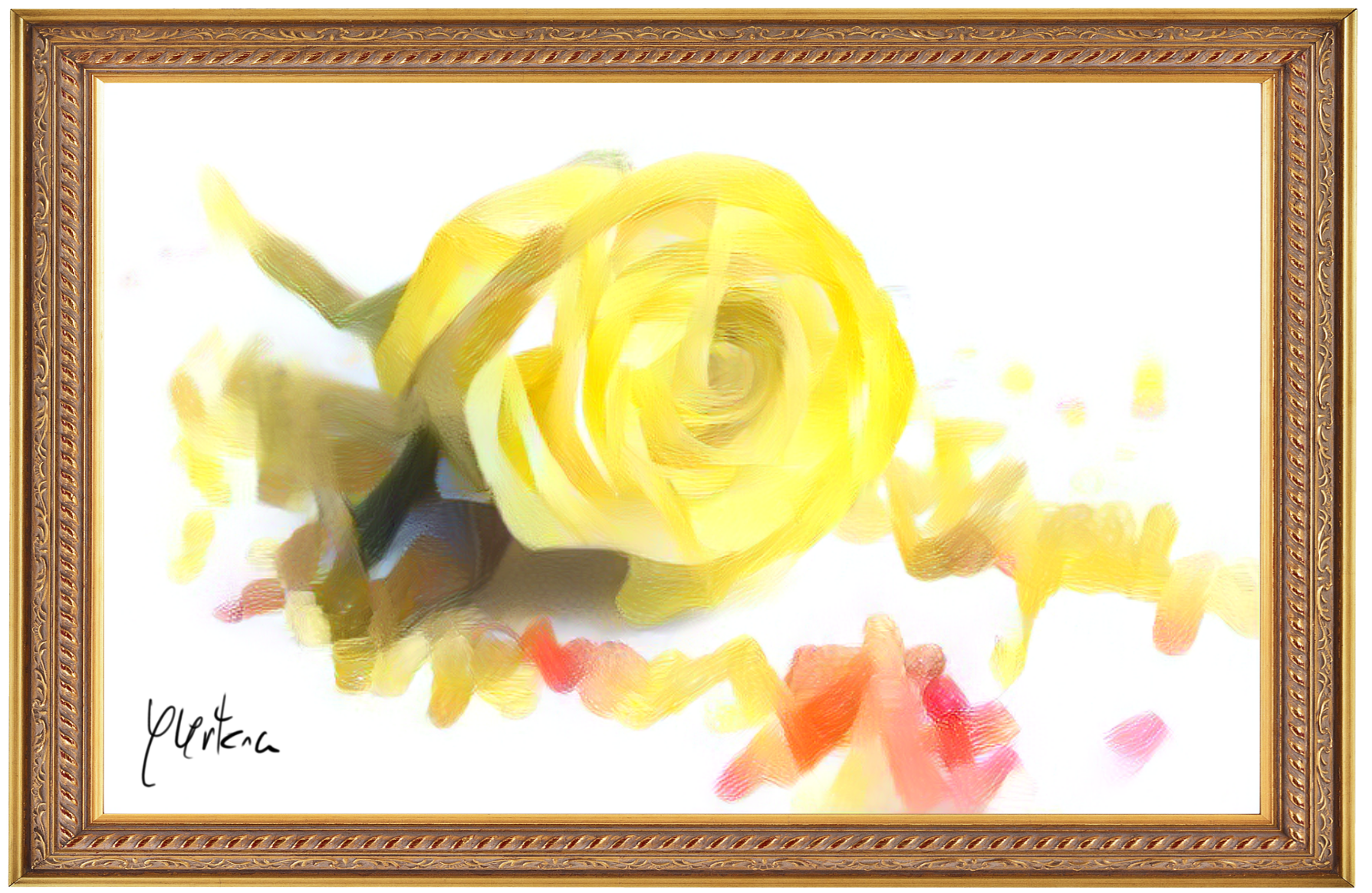Guertena is an easy to use, quality oriented python library for neural style transfer.
Project description

It's said that spirits dwell in objects into which people put their feelings. I've always thought that, if that’s true, then the same must be true of artwork. So today, I shall immerse myself in work, so as to impart my own spirit into my creations.
-- Weiss Guertena
Guertena is an easy to use, quality oriented python library for neural style transfer.

Guertena the fast way
Just follow this tutorial on Google Colab to learn how to use Guertena easily.
Installing Guertena
Prerequisites
First install a Python 3, 64-bits Conda distribution.
It is highly recommended that you make use of an nVidia GPU, and that your computer has the appropriate drivers for your operative system and GPU card. You will also need to install a cudatoolkit version compatible with your GPU driver.
Install
To install guertena just run
pip install guertena
Usage
Suppose you have a content image located at the current folder and named myphoto.png and you want to transfer the style contained in another picture style.png, also located in the current folder. First you will need to load these images with PIL
from PIL import Image
content_image = Image.open("./myphoto.png")
style_image = Image.open("./style.png")
Now, to run style transfer with the recommended parameters, just do
from guertena import style_transfer
result = style_transfer(content_image, style_image)
Note the default parameters are oriented towards a high quality result, so depending on your GPU and the image size the style transfer can take 5-15 minutes.
Once the style transfer is performde you save the result back to disk with
result.save("./result.png")
Optimizing for speed and memory requirements
If the input content image is too large, you might find the style transfer takes too long, or even you get a GPU out of memory error. In that case you optimize the process by requesting a smaller resolution in your output
result = style_transfer(content_image, style_image, output_resolution=512)
The output_resolution parameter can be a number with the rows of the desired output resolution, or a string in the form "ROWSxCOLUMNS". If only the rows are provided, the columns are rescaled accordingly to maintain aspect ratio.
Additionally, by default Guertena uses a resolution upscaling strategy to generate high quality style transfers. This means Guertena starts by generating a result image with resolution 256, and using it as starting point to produce a larger resolution image. This upscaling procedure is repeated a number of times until the desired resolution is reached. But you can also deactivate this behavior and produce an image directly at the target resolution with
result = style_transfer(content_image, style_image, upscaling_rounds=0)
Advanced usage: tuning algorithm parameters
If the style transfer results do not look good there are several parameters you can tune to obtain different outputs. But first, you will need some basic understanding on how the method works.
Guertena is mainly based on the Neural Style Transfer algorithm by Leon A. Gatys, Alexander S. Ecker and Matthias Bethge. In this method, the image $x$ to be produced tries to minimize the following cost function

that is, the product image must minimize three different criteria:
- Content loss: measures how well the resultant image matches the original content image. This level of match is computed in terms of the neuron activation values of a VGG19 network that uses the image as input.
- Style loss: measures how well the resultant image matches the provided style image. This level of match is computed in terms of the neuron activation correlations of a VGG19 network that uses the image as input.
- TV loss: penalizes neighbouring pixels that take very different values, to avoid noise appearing in the result.
To produce different results we can tune the weights of these three criteria through the appropriate parameters of the style_transfer function:
content_weight: larger values force the result to more closely the original image. Default is 1.style_weight: larger values impose stronger style patterns. Default is 1e6.tv_weight: larger values produce smoother images. Default is 1.
When changing this parameters it is recommended to increase/decrease them an order of magnitude. E.g. to imprint a stronger style you could try with
result = style_transfer(content_image, style_image, style_weight=1e7)
References
Guertena builds on many previous methods and implementations of neural style transfer methods. Here are the relevant ones:
- Gatys et al. - A Neural Algorithm of Artistic Style
- Pytorch Neural Style tutorial
- Neural Style Torch implementation by jcjohnson
- Neural Style Pytorch implementation by ProGamerGov
- Multiresolution strategy by jcjohnson
Acknowledgements and disclaimers
The author acknowledges partial financial support (in the form of GPU time) from the following research projects and institutions:
- PID2019-106827GB-I00 / AEI / 10.13039/501100011033
- European Regional Development Fund and Spanish Ministry of Economy, Industry, and Competitiveness - State Research Agency, project TIN2016-76406-P (AEI/FEDER, UE).
- Grupo de Aprendizaje Autómatico (GAA), Universidad Autónoma de Madrid (UAM)
- Instituto de Ingeniería del Conocimiento (IIC)
And in case you are wondering, the name Guertena and the opening quote come from the excellent, albeit obscure, indie game Ib. I'm not related to it's creator (kouri) nor claim any rights. I'm just a fan of hiw work and wanted to pay homage.
Project details
Download files
Download the file for your platform. If you're not sure which to choose, learn more about installing packages.












